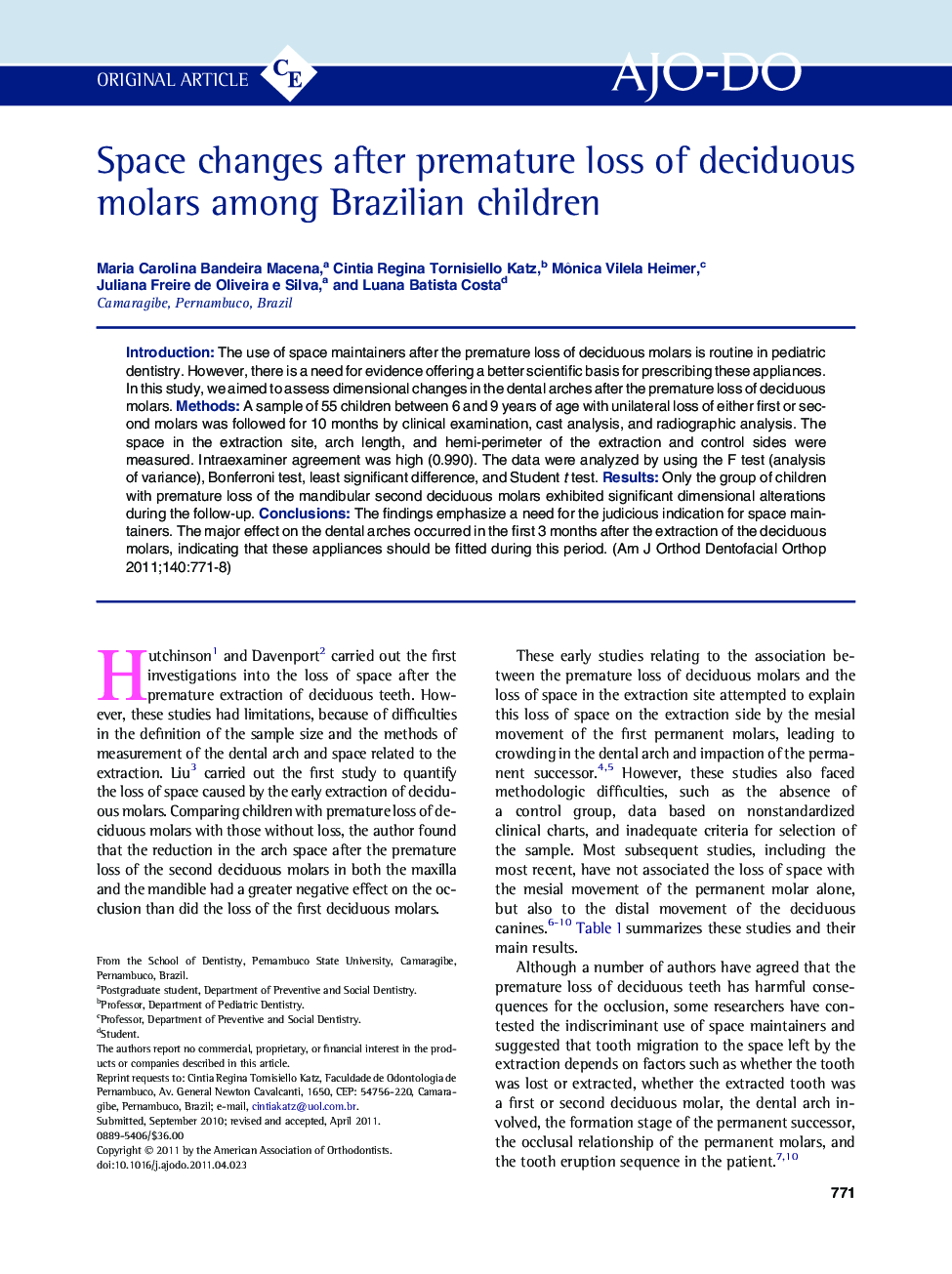| Article ID | Journal | Published Year | Pages | File Type |
|---|---|---|---|---|
| 3117166 | American Journal of Orthodontics and Dentofacial Orthopedics | 2011 | 8 Pages |
IntroductionThe use of space maintainers after the premature loss of deciduous molars is routine in pediatric dentistry. However, there is a need for evidence offering a better scientific basis for prescribing these appliances. In this study, we aimed to assess dimensional changes in the dental arches after the premature loss of deciduous molars.MethodsA sample of 55 children between 6 and 9 years of age with unilateral loss of either first or second molars was followed for 10 months by clinical examination, cast analysis, and radiographic analysis. The space in the extraction site, arch length, and hemi-perimeter of the extraction and control sides were measured. Intraexaminer agreement was high (0.990). The data were analyzed by using the F test (analysis of variance), Bonferroni test, least significant difference, and Student t test.ResultsOnly the group of children with premature loss of the mandibular second deciduous molars exhibited significant dimensional alterations during the follow-up.ConclusionsThe findings emphasize a need for the judicious indication for space maintainers. The major effect on the dental arches occurred in the first 3 months after the extraction of the deciduous molars, indicating that these appliances should be fitted during this period.
